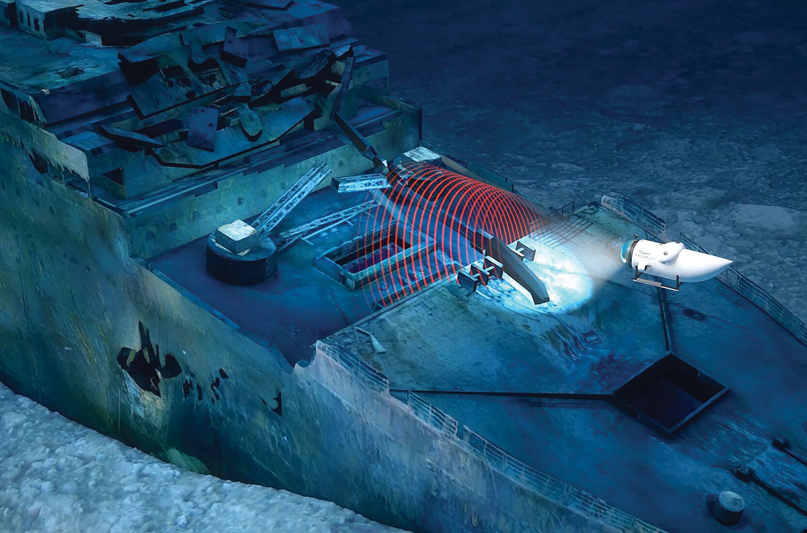 The second person ever to solo dive to a depth of 4,000 meters is Stockton Rush, CEO of Everett, Washington-based OceanGate. The December 10 dive was completed in the Bahamas on the company’s privately-owned submersible Titan as a trial run before OceanGate’s 2019 Titanic survey expedition. The wreck of the Titanic rests about 4,000 meters (13,000 feet) deep.
The second person ever to solo dive to a depth of 4,000 meters is Stockton Rush, CEO of Everett, Washington-based OceanGate. The December 10 dive was completed in the Bahamas on the company’s privately-owned submersible Titan as a trial run before OceanGate’s 2019 Titanic survey expedition. The wreck of the Titanic rests about 4,000 meters (13,000 feet) deep.
“This deep dive is a major milestone for OceanGate,” Rush said in a news release following the successful test of the company’s five-person submersible. “It validates our innovative engineering and the repeated use of our carbon fiber and titanium hull. Titan can provide access to half of the world’s ocean depths for up to five people at a time.”
The test dive was conducted near Little Harbour on Great Abaco Island. Previously, a scale model of the Titan was pressure tested at the University of Washington. Other testing included 20 shallow dives in Puget Sound and unmanned dives in the Bahamas.
The dive took Rush seven hours to complete as there were multiple pauses during the descent to test the strength of the hull using OceanGate’s Acoustic Real Time Monitoring system. “The system uses acoustic sensors to detect sounds emitted by the carbon fiber material as it responds to the external pressure, and employs strain gauges to measure the physical deflection,” OceanGate said. Delicate acoustic detectors listen to sounds made by the hull under different pressures to give the pilots of Titan advanced warning of any potential problems.
All this preparation will hopefully pay off for OceanGate’s Titanic expedition this year. The Titan will be the first crewed vessel to explore the Titanic since film director James Cameron dove to the ship in a submersible for the 2012 centennial of its sinking. Cameron became the first person to solo dive to 4,000 meters on that expedition. OceanGate intends to bring scientists and citizen explorers on board who will accompany the Titan crew to the wreck of the Titanic. Tickets for citizen explorers will begin at about $100,000. The company’s end goal is to make exploration of wrecks and the ocean floor more feasible for scientists and other experts.